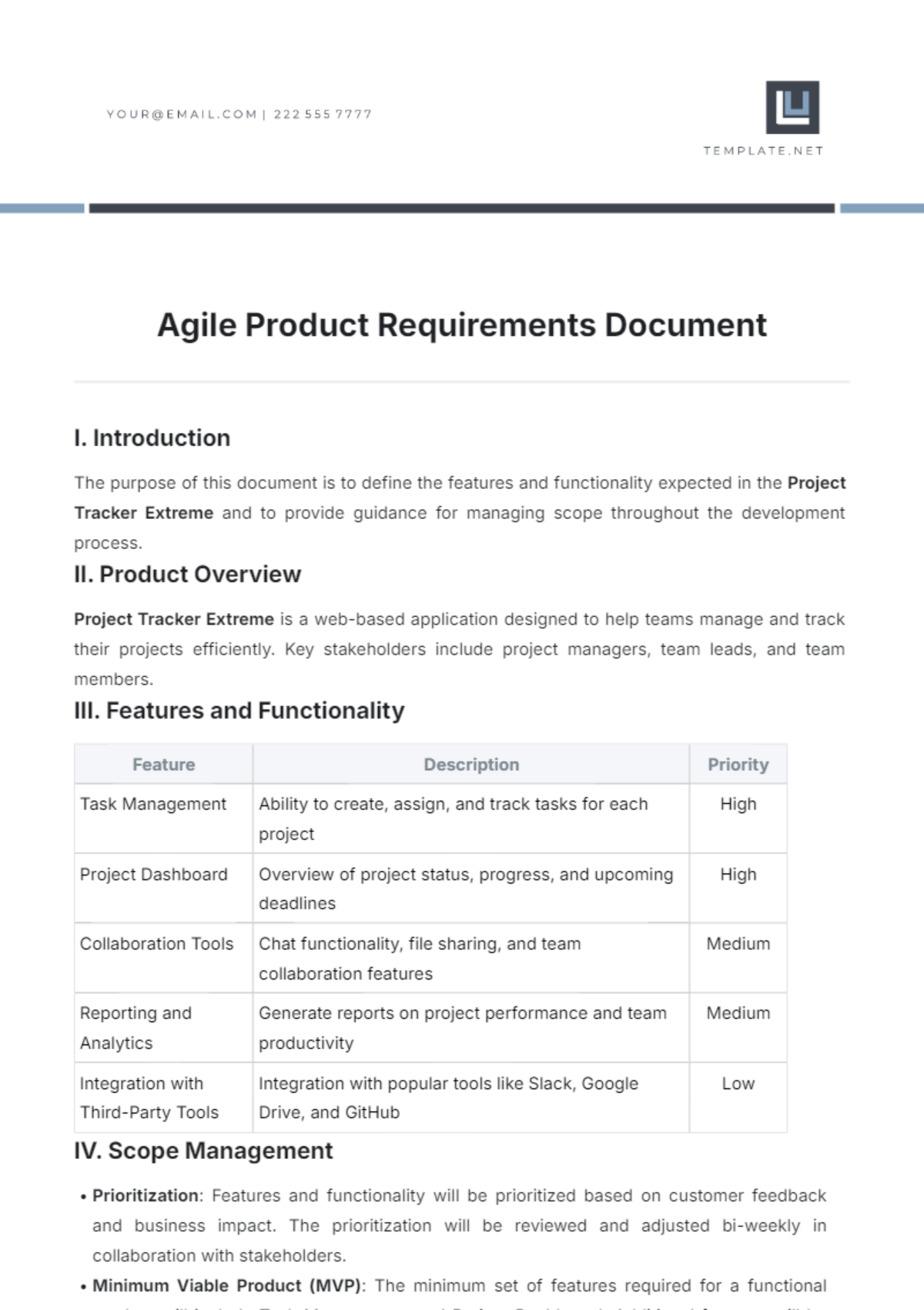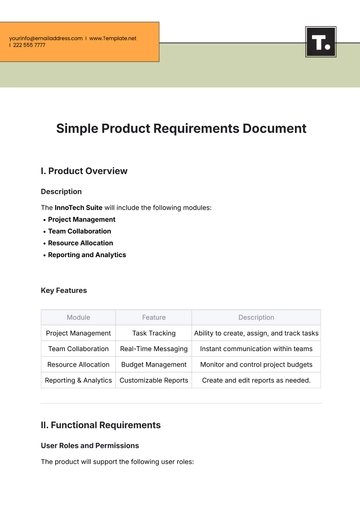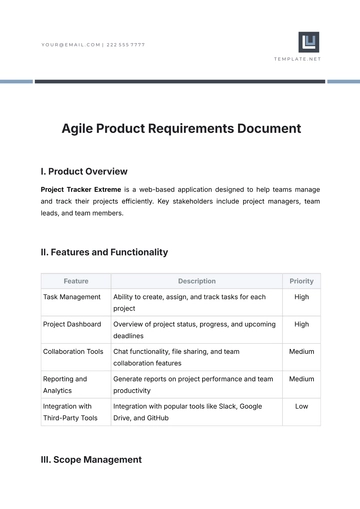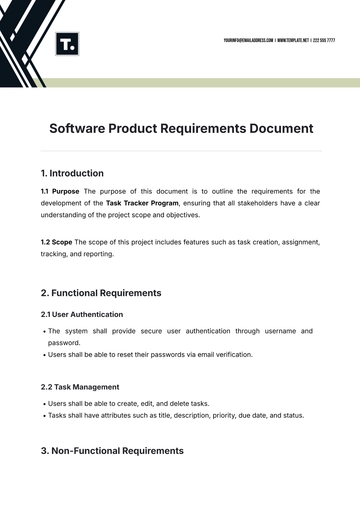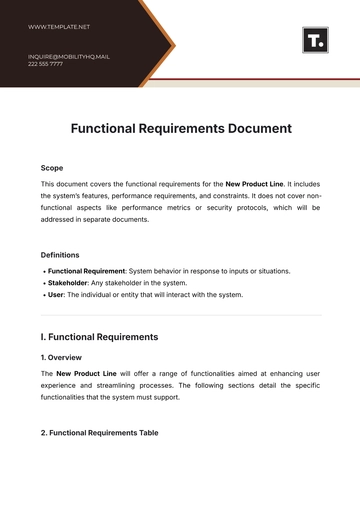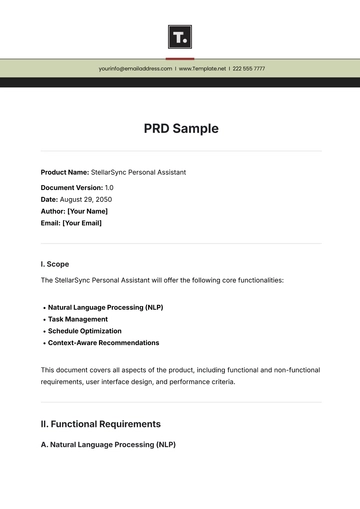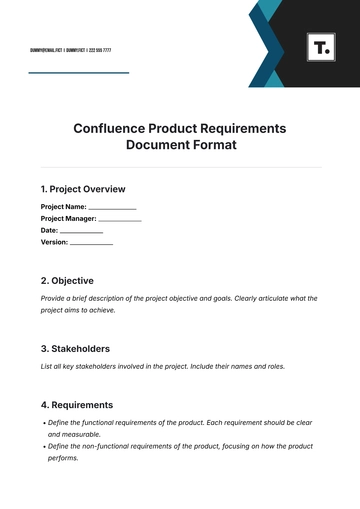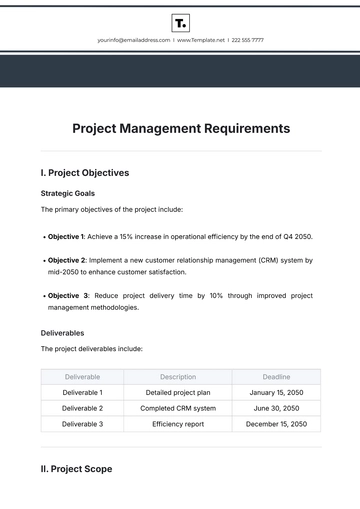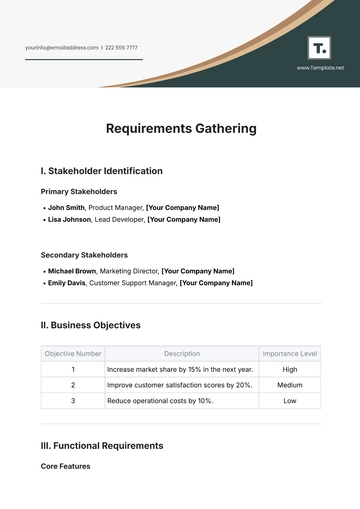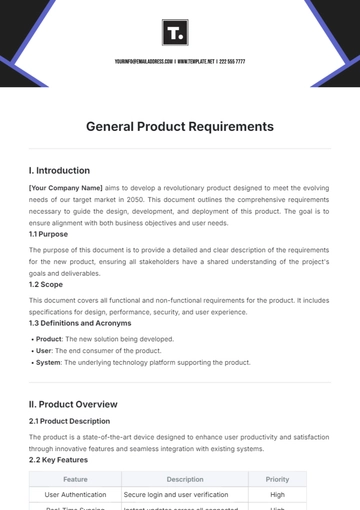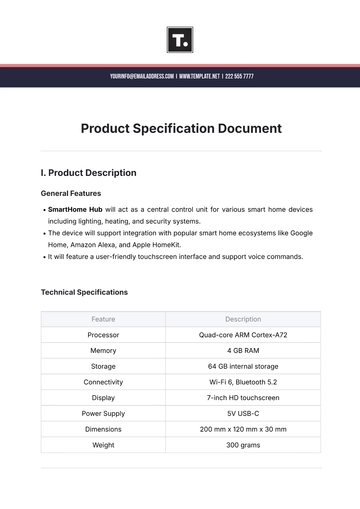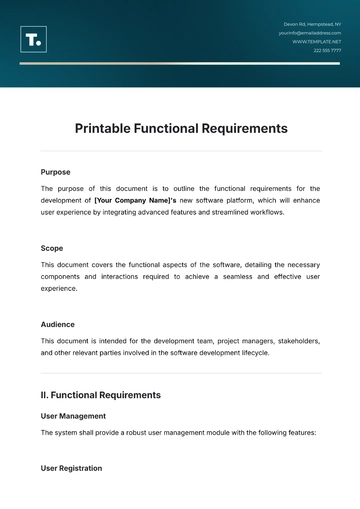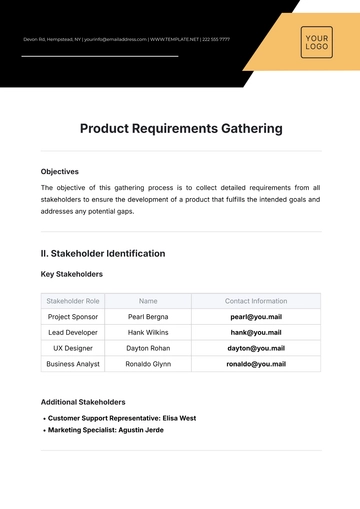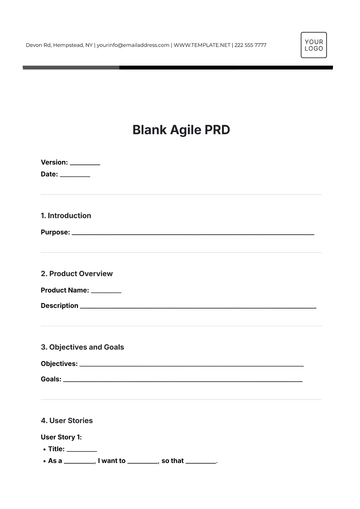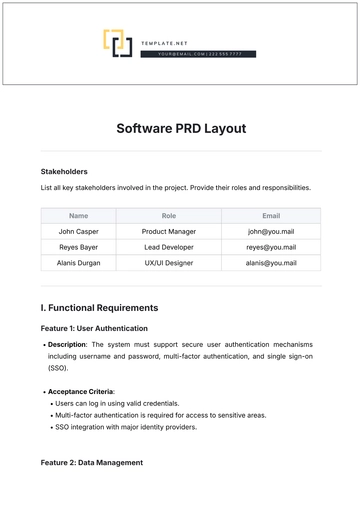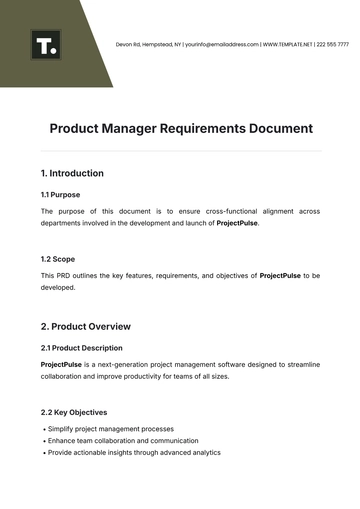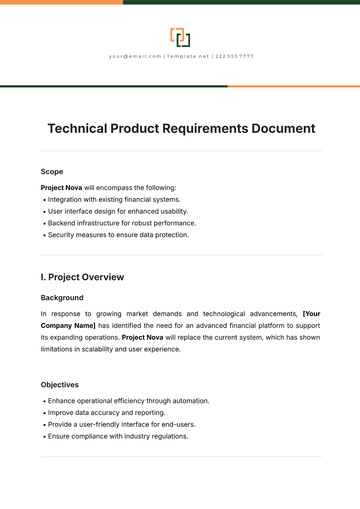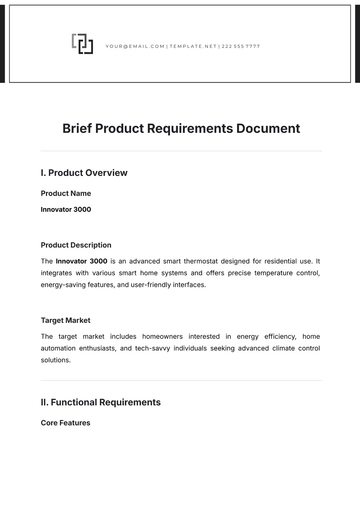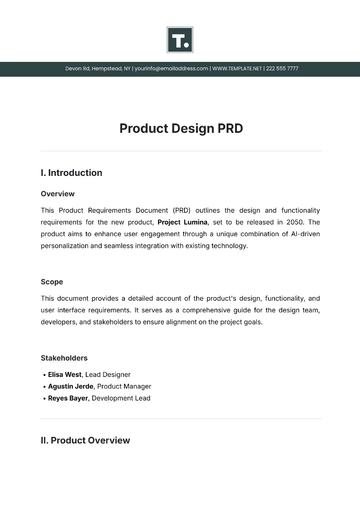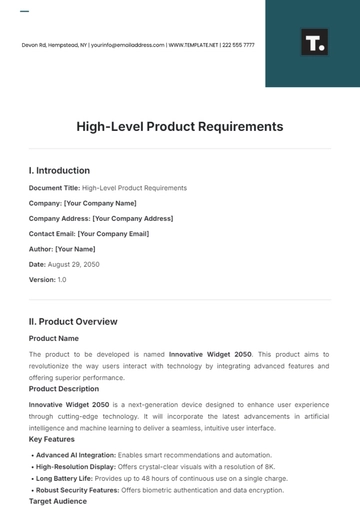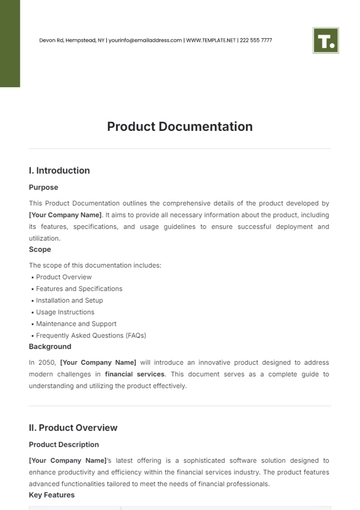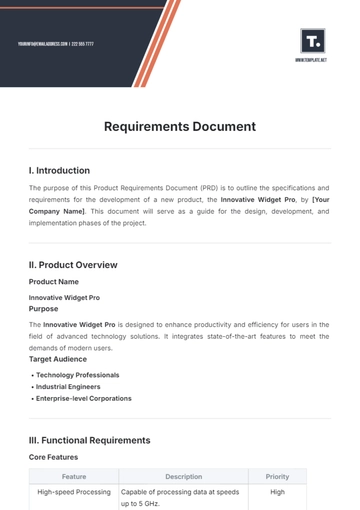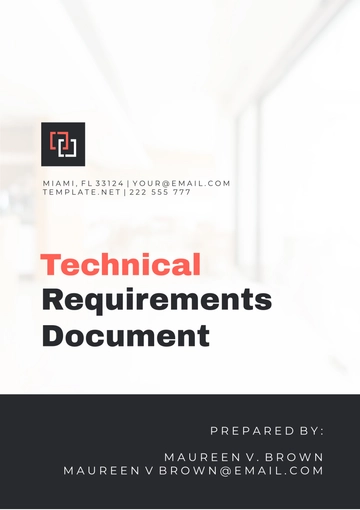Agile Product Requirements Document
I. Product Overview
Project Tracker Extreme is a web-based application designed to help teams manage and track their projects efficiently. Key stakeholders include project managers, team leads, and team members.
II. Features and Functionality
Feature | Description | Priority |
|---|
Task Management | Ability to create, assign, and track tasks for each project | High |
Project Dashboard | Overview of project status, progress, and upcoming deadlines | High |
Collaboration Tools | Chat functionality, file sharing, and team collaboration features | Medium |
Reporting and Analytics | Generate reports on project performance and team productivity | Medium |
Integration with Third-Party Tools | Integration with popular tools like Slack, Google Drive, and GitHub | Low |
III. Scope Management
Prioritization: Features and functionality will be prioritized based on customer feedback and business impact. The prioritization will be reviewed and adjusted bi-weekly in collaboration with stakeholders.
Minimum Viable Product (MVP): The minimum set of features required for a functional product will include Task Management and Project Dashboard. Additional features will be considered for inclusion based on customer feedback and resource availability.
Feature Freeze Policy: Once the MVP is defined, a feature freeze policy will be implemented to prevent scope creep. Changes to the scope will require approval from the project steering committee.
Trade-offs: In the event of conflicting priorities or resource constraints, trade-offs will be made based on the impact on customer value and project timelines. Decisions will be documented and communicated transparently to the team.
IV. Acceptance Criteria
The acceptance criteria for each feature will be collaboratively defined and agreed upon by the development team and stakeholders to ensure the delivered product meets the desired quality standards. Acceptance criteria will include, but are not limited to:
Clear definition of expected behavior and outcomes for each feature.
Success criteria: functionality, performance, usability.
Test scenarios and conditions to verify that the feature meets the specified criteria.
Any dependencies or prerequisites are necessary for feature acceptance.
Criteria for regression testing to ensure unchanged functionality.
V. Assumptions and Constraints
VI. Glossary
VII. Revision History
Version | Date | Description |
|---|
1.0 | June 15, 2050 | Initial draft |
